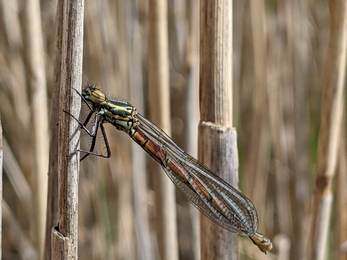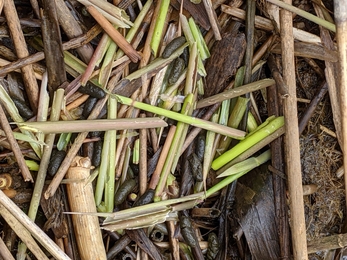Weekly wild news from our reserves - 14 May 2021
Dunwich beach sunrise - Jamie Smith
Our reserve team managed to capture the sounds of sedge, reed and grasshopper warblers this week – listen to their distinctive songs from the clips below.
Sedge warbler at Snape Marshes (https://youtu.be/g1olyQg5i8s)
Sedge warbler at Snape Marshes
Reed warbler at Dingle Marshes (https://youtu.be/Vq73kvISM1c)
Reed warbler at Dingle Marshes
Dingle Marshes springs to life
This week has seen a large hirundine movement at Dingle Marshes with plenty of swallow, sand martin and house martin moving through. Amongst other birds recorded were swifts, three hobbies, yellow wagtail and common sandpiper. Also, this large red damselfly was seen emerging and water vole surveys revealed several feeding stations and latrines. Water voles cut vegetation into 8-10cm lengths and leave these distinctive piles beside the water.
Warmth brings winged wonders
Although this brightly-coloured insect looks like a bee or wasp, it is in fact a hoverfly Leucozona lucorum, a true fly with no sting. Hoverflies are excellent examples of Batesian mimicry (named after H W Bates who first described it in 1862). They generally mimic bees and wasps – insects that sting and also taste unpleasant, so are avoided by predators. There are about 250 different hoverfly species in Britain and, as with this image taken by David Stansfeld at Knettishall Heath, adults can generally be seen on flowers throughout spring, summer and autumn. More well-known species and welcome in the garden are those hoverflies that eat aphids and other pests. Adults drink nectar and eat pollen and honeydew.
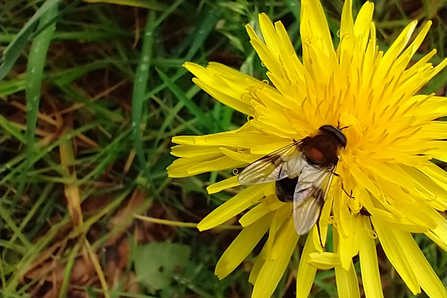
Hoverfly Leucozona lucorum - David Stansfeld
St Mark’s fly
Another sure sign that spring has sprung is the appearance of St. Mark’s flies – distinctive with their dangly black legs. St Mark’s flies otherwise known as hawthorn flies have a very short adult life cycle; and it is the timing of their adult life and busy mating activities that gives rise to their names.
Their fleeting time in the air begins on or around St Mark’s Day on April 25th, with the smaller males appearing first to drift in swarms at head height, with their long legs dangling beneath them along woodland edges, hedgerows, fields and wetlands in a bid to attract the females. Their gentle, almost lazy movement – they will often land on any objects in their way, including fence posts and people and are rather sluggish at rest - belies the ‘rush’. They are in flight for approximately only one week and after mating, the females lay their eggs in the soil and die quickly afterwards. It is a fascinating flurry of languid activity, which is all over by the time the hawthorn’s pale pink blossom is fully out in mid-May.
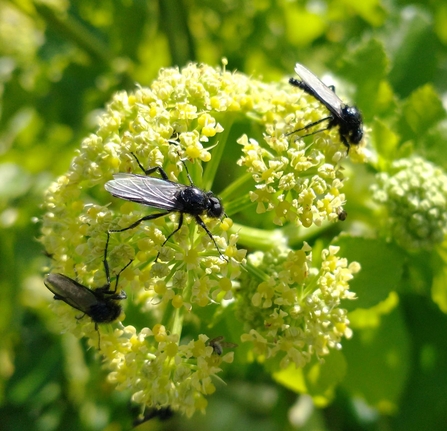
St Mark’s fly – Dan Doughty
Winks Meadow wildflowers
This time of year our meadow nature reserves really are exceptionally pretty! Warden Dan Doughty pictured some of the beautiful spring flowers at Winks Meadow recently.
Cuckoo calls and flowers
The unmistakeable sound of cuckoos has been heard across our nature reserves recently, as these birds complete their annual migration back to the UK from Africa. At about the same time, lady’s smock also emerges into flower, hence its common name of cuckoo flower.
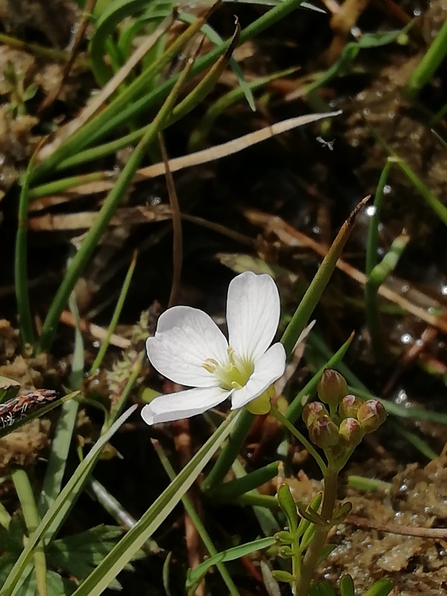
Cuckoo flower at Snape Marshes - Gabby King
So much more than kingfisher capital
Over the past few years, the team at Lackford Lakes have been continuing their quest to highlight the wealth of wildlife found on the nature reserve. Bird life is an obvious draw for visitors and is synonymous with open bodies of water, but the intricate array of habitats connecting these lakes alongside marginal outlying areas around the fringes of the reserve provide host for insects, mammals, reptiles, amphibians, fungi and, as Joe Bell-Tye highlights this week, plants. Here are six spring beauties including ‘spring beauty’!
I saw a mouse – where?
Although this tiny wildflower identified at Knettishall Heath this week is incredibly common, it is often overlooked as its flowers are inconspicuous despite their value as a food source for insects.
It is a low-growing, spreading plant which hugs the ground. Its stems are sometimes reddish in colour and these carry little, hairy leaves in pairs - hence the common name of mouse-ear.
This wild plant is found throughout the UK growing in a very wide range of grassy and disturbed habitats including meadows, pastures, verges, dunes and mountain grassland. It also grows in wetter places such as fens and mires. The seed of this flower is very long-lived, surviving buried in the soil seed bank for up to 40 years. Seeds germinate when they are brought to the surface by digging or disturbance and each plant can produce over 6,000 seeds.
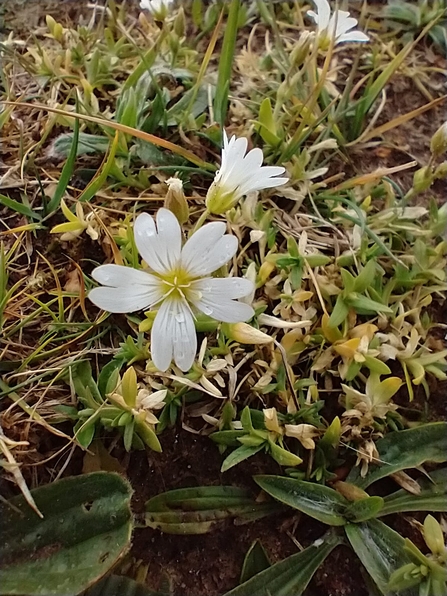
Mouse ear at Knettishall Heath – David Stansfeld


